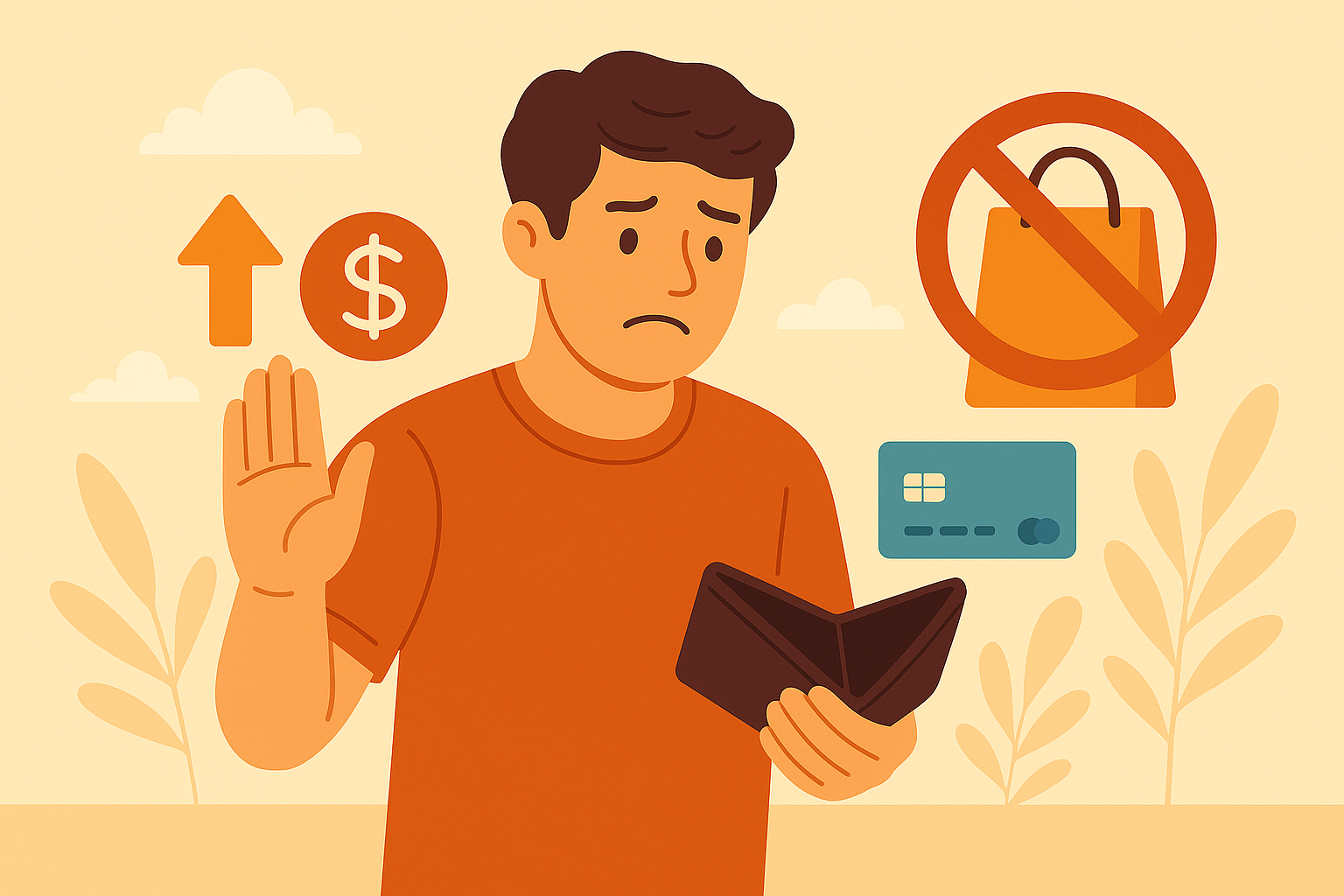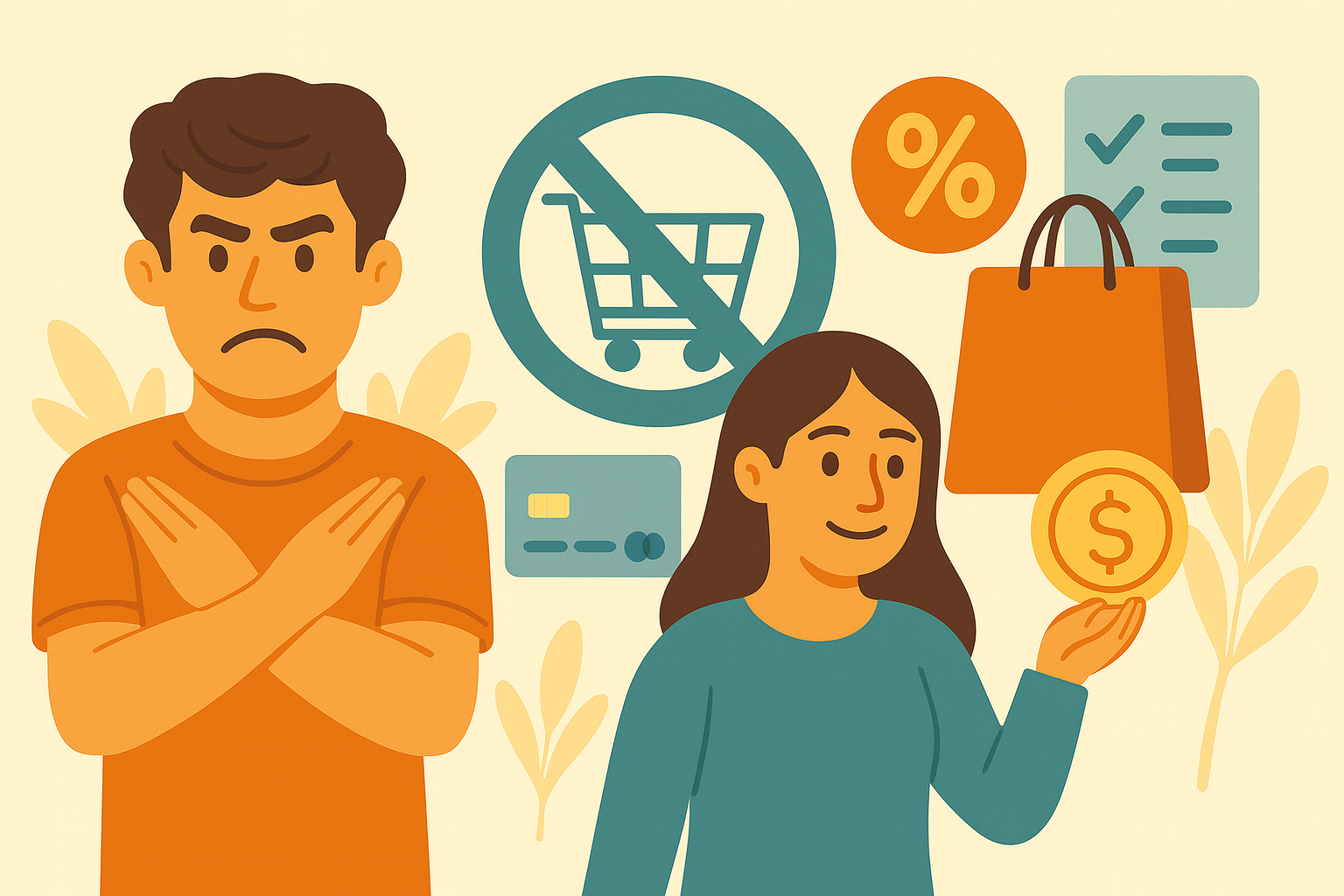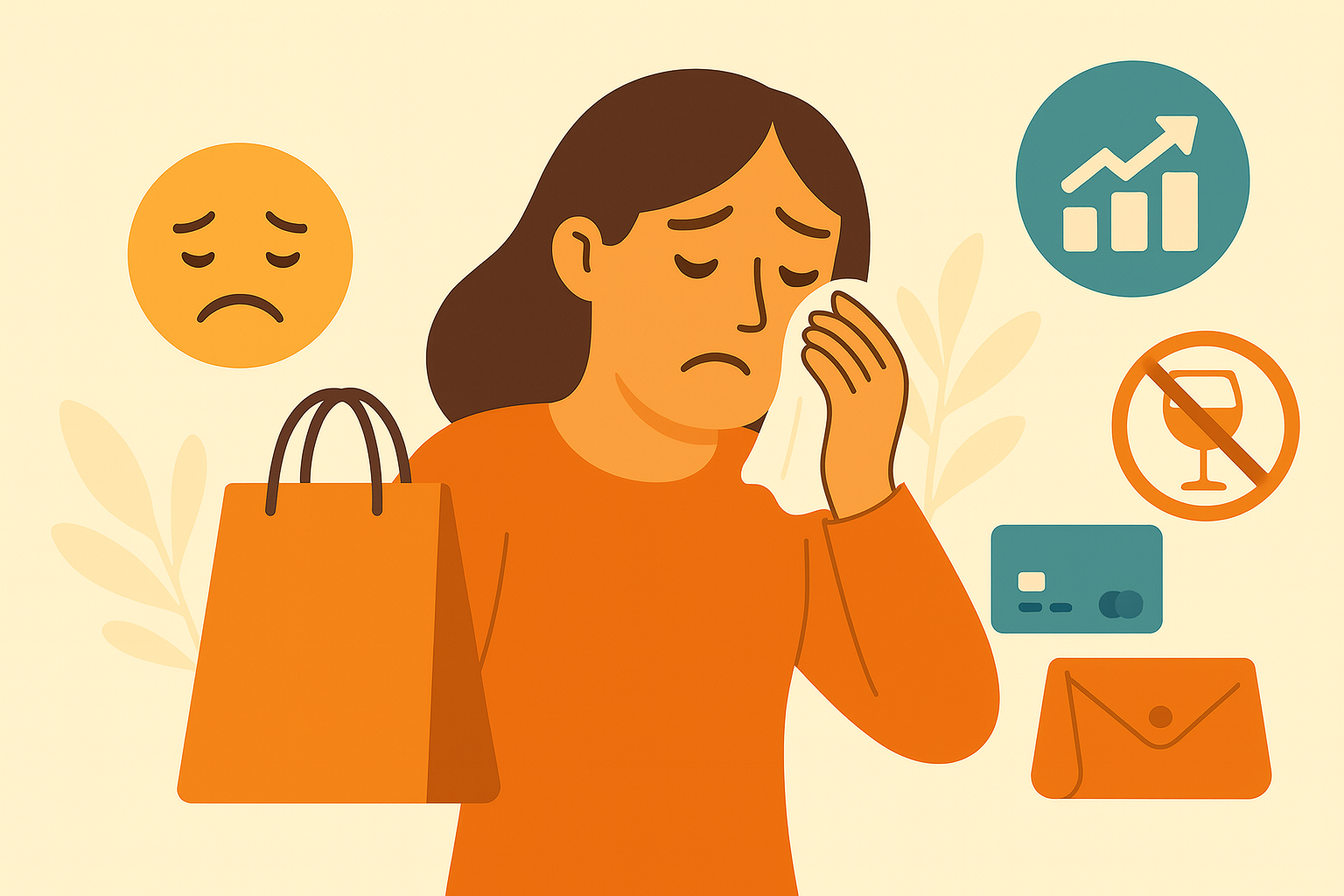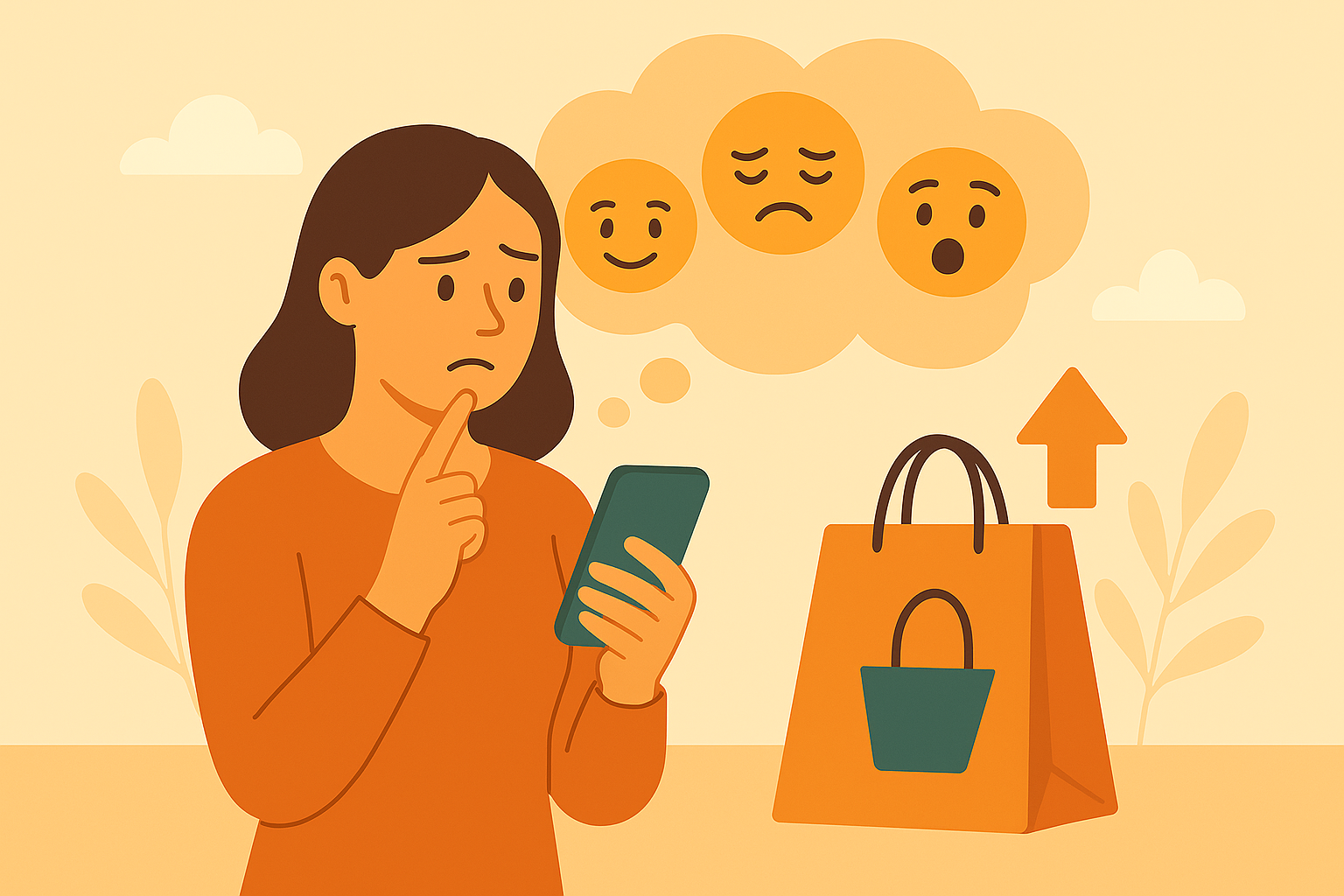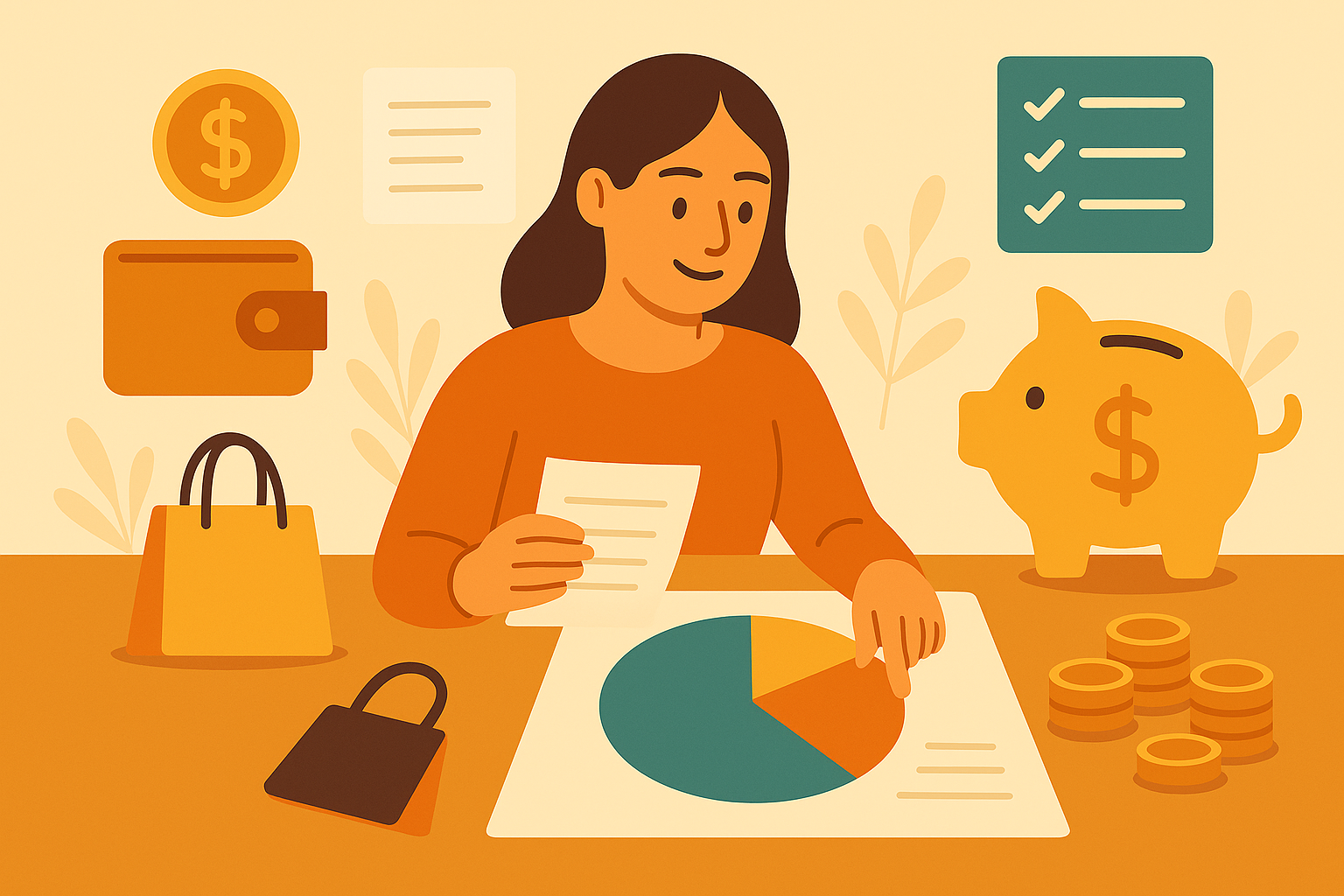You know that sick feeling in your stomach when you check your bank account after a weekend of “treating yourself”? That’s the feeling of spending money that wasn’t really yours to spend. Maybe it went on your credit card. Perhaps you used Afterpay or Klarna because “it’s just four small payments.” Or you told yourself you’d figure it out later when your next paycheck hits. Here’s the thing nobody wants to admit: spending money you don’t have has become completely normalized. We’re all doing it. The credit card companies, Buy Now Pay Later apps, and the entire retail industry are making it easier than ever. Just because everyone’s doing it doesn’t mean it’s not slowly destroying your financial future. In this post, you’re going to see exactly how to stop spending money you don’t have, step by step.
Why We Keep Spending Money We Don’t Have
Let’s get real for a second. Learning how to stop spending money you don’t have starts with understanding why we do it in the first place. You’re not bad with money because you lack discipline or willpower. You’re struggling because the entire system is designed this way.
Credit cards make it feel like free money. Swiping a card doesn’t trigger the same pain response in your brain as handing over cash. That’s not an accident—it’s by design.
Buy Now, Pay Later makes debt feel like budgeting. When you see “4 interest-free payments of $25,” your brain focuses on that $25, not the $100 you’re actually spending. It feels manageable. It feels smart, even. But here’s what they’re not telling you: 91.5 million Americans are now using BNPL services, and 25% of them are using it to buy groceries. Yes Groceries!. If people are financing their food, we’ve got a serious problem.
Social media makes overspending look normal. Everyone’s posting their hauls, their new outfits, their fancy brunches. What they’re not posting? The credit card debt funding it all. They’re hiding the financial stress keeping them up at night. Nobody mentions the fact that they can’t afford their own lifestyle.
“Just this once” becomes every single time. You tell yourself it’s fine to put this one thing on the credit card because you’ll pay it off next month. But then next month comes with its own “just this once” purchase. And another. And another.
Sound familiar? You’re not alone.
Signs You’re Living Beyond Your Means
Before we get into how to stop spending money you don’t have, let’s get brutally honest about whether this is actually your problem. Here are the telltale signs:
You rely on credit cards for everyday purchases. Using credit cards because you want the points is one thing. Relying on them because your checking account is empty is another.
Multiple BNPL payments come out every two weeks. You’ve got Afterpay for that jacket, Klarna for those shoes, Affirm for that couch. Suddenly $100 here and $50 there starts eating up your entire paycheck.
Your bank balance surprises you. The truth is, you genuinely don’t know how much money you have available at any given time. Every purchase feels like a gamble.
You pay overdraft fees regularly. If you’re paying $35 fees because you spent money that wasn’t there, you’re literally paying extra to spend money you don’t have.
Your credit card balance grows every month. You make payments, but the balance never goes down—or worse, it keeps climbing.
Checking your accounts feels scary. Financial avoidance is real. When you’re scared to look at your bank account or credit card statements, that’s a huge red flag.
Future money justifies current purchases. “I’ll have this paid off when I get my tax refund.” “My bonus will cover this.” “I’ll pick up extra shifts.” These are signs you’re spending money you haven’t earned yet.
If any of these hit close to home, keep reading. Because you’ll learn exactly how to stop this cycle.
Rule #1: Delete Every BNPL App to Stop Overspending
If you’re serious about learning how to stop spending money you don’t have, this is your first step. I’m serious. Pull out your phone. Delete Afterpay. Get rid of Klarna. Remove Affirm. Every single Buy Now, Pay Later app needs to go.
These apps are designed to make spending money you don’t have feel responsible. They trick your brain into thinking you’re budgeting when you’re actually going into debt.
Here’s the reality: if you can’t afford to buy something outright today, you can’t afford it in four payments either. Those four $25 payments are still $100 you don’t have. The math doesn’t change just because it’s split up.
And here’s the scary part: 24% of BNPL users have already made late payments. For people aged 18-29, that number jumps to 32%. These “interest-free” payment plans come with late fees that’ll absolutely wreck your budget.
Delete the apps. Remove temptation completely. Making spending money you don’t have harder, not easier, is the goal.
Rule #2: Calculate Your Real Money
Your credit limit is not your money. Read that again. Just because your credit card company gives you a $5,000 limit doesn’t mean you have $5,000 to spend.
The real available money is the actual cash sitting in your checking account right now, minus any bills that are due before your next paycheck.
Let me break this down with a real example:
- Checking account balance: $800
- Rent due in 5 days: $1,200
- Already paid, but paycheck hits in 3 days: You’re good
- Your REAL available money: $800 minus any bills = maybe $100-200 for discretionary spending
That’s it. That’s what you actually have to spend. Not the $3,000 available on your credit card. Not the $1000 Affirm says you’re “approved” for.
Start thinking in terms of real money, not available credit. This one mindset shift changes everything.
Rule #3: Remove Saved Payment Info to Control Impulse Spending
One of the most effective ways to stop spending money you don’t have is to make spending money harder. Seriously.
Go through every retailer website and app where you shop and delete your saved payment information. All of it.
Amazon? Delete it. Target? Delete it. Your favorite clothing stores? Delete them all.
When you have to physically get up, find your wallet, and manually enter your card information every single time you want to buy something, you create friction. And friction gives your brain time to ask: “Do I actually need this, or do I just want it right now?”
That 30 seconds of inconvenience could save you hundreds of dollars a month. One-click purchasing is dangerous when you’re trying to break the habit of spending money you don’t have.
Rule #4: Wait 48 Hours Before Spending on Non-Essentials
Here’s a rule that’ll save you thousands: If it’s not food, medicine, or an actual emergency, you wait 48 hours before buying it.
See something you want? Great. Screenshot it, bookmark it, add it to a list—whatever. But don’t buy it. Wait 48 hours.
Here’s what happens during those 48 hours: the dopamine rush fades. The impulse weakens. You start asking yourself better questions.
“Do I really need this, or did the algorithm just convince me I do?”
“Where would I even put this?”
“Am I shopping because I’m bored?”
Nine times out of ten, you’ll realize you don’t actually want the thing anymore. That impulse purchase that felt so necessary on Sunday suddenly feels completely optional by Tuesday.
And if after 48 hours you still genuinely want it and can afford it with real money? Then buy it guilt-free.
Rule #5: Try a Week of Cash-Only Spending
This one’s uncomfortable, and that’s exactly why it works.
Withdraw actual cash for one week of spending. No cards. No apps. Just cash.
When you hand over a $20 bill and get back $3, you feel that money leaving. Your brain registers the loss in a way that swiping a card just doesn’t trigger.
You’ll be shocked at how much more intentional your spending becomes when you’re dealing with physical money. That $6 latte suddenly feels a lot more expensive when you’re handing over cash.
Try it for just one week. Use cash for everything except bills that have to be paid electronically. See what happens to your spending.
Rule #6: Track Every Single Dollar You Spend
I know, I know. Tracking spending sounds boring and tedious. But here’s the truth: you can’t stop spending money you don’t have if you won’t even look at where your money is going. You can’t fix a problem you won’t acknowledge.
You don’t need a fancy app or a complicated spreadsheet. Just write it down. Every coffee. Each lunch. Every impulse purchase at Target. Everything.
At the end of the week, add it up. You’re probably going to be shocked. Most people underestimate their spending by 20-30%.
Here’s what tracking does: it creates awareness. Once you’re aware of where your money is actually going, you can’t unsee it. That $15 here and $30 there suddenly becomes real.
And when you see that you spent $200 on takeout in one week, you’ll naturally start making different choices. Not because someone told you to, but because you’ll realize that money could’ve gone toward something you actually care about.
Rule #7: Build Your Emergency Buffer to Avoid Debt
One of the biggest reasons people spend money they don’t have is because they have zero buffer. One unexpected expense—a flat tire, a vet bill, a last-minute birthday gift—and they’re forced to put it on a credit card or use BNPL.
This is a crucial step in how to stop spending money you don’t have: start building a tiny emergency buffer. Even $100 makes a difference.
I’m not talking about a full 6-month emergency fund right now (though that’s the goal eventually). I’m talking about $100 that sits in your savings account and doesn’t get touched unless it’s a genuine emergency.
That $100 creates psychological breathing room. When something unexpected pops up, you’re not immediately in crisis mode.
How do you build it? Start small:
- Save $10 from every paycheck
- Put all your spare change in a jar
- Sell something you don’t use anymore
- Skip one takeout meal per week and save that money instead
It’ll take time, but even that small cushion changes how you feel about money. You’re no longer operating from a place of constant scarcity.
Rule #8: Replace Shopping with Free Alternatives
Let’s be honest: a lot of spending money we don’t have comes down to emotion. We’re bored. We’re stressed. Maybe we’re sad. Perhaps we had a rough week. We feel like we “deserve” something.
If you want to know how to stop spending money you don’t have for good, you need to address the emotional side. So we shop. Because shopping gives us a temporary hit of dopamine. It feels good. For about 10 minutes.
But then the package arrives, the high fades, and you’re left with a lighter bank account and probably some guilt.
Finding other ways to get that dopamine hit without spending money is essential. Here are some that actually work:
- Go for a walk outside (seriously, nature is free and it works)
- Call a friend and actually talk
- Work out or stretch at home
- Reorganize a closet or drawer (the satisfaction is real)
- Take a long shower or bath
- Watch a comfort show you love
- Cook something new with ingredients you already have
- Journal or write down what you’re feeling
- Take a nap
The goal isn’t to never feel good. The goal is to feel good without spending money you don’t have to do it.
Rule #9: Get Brutally Honest With Someone
This is the hardest one, but it’s also the most powerful step in how to stop spending money you don’t have.
Tell someone—a partner, a trusted friend, a family member—that you’re trying to stop spending money you don’t have. Say it out loud.
Having accountability changes everything. When you’re about to make an impulse purchase, that little voice in your head will remind you: “I told Sarah I was working on this.”
Even better? Find someone who’s also trying to get better with money and check in with each other. Share wins. Share struggles. Celebrate when you resist a temptation.
Money is so isolating because nobody talks about it honestly. Everyone’s pretending they have it all figured out while secretly stressing about their credit card balance.
Break the silence. You’ll be amazed at how many people are dealing with the exact same thing.
The Mindset Shift: Living Within Your Means vs Overspending
Here’s what I’ve learned about how to stop spending money you don’t have: the difference between people who look rich and people who are actually building wealth comes down to one thing—spending money you have versus spending money you don’t.
Looking rich is easy. Put it on a credit card. Finance it. Split it into payments. Wear the outfit, post the picture, get the validation.
Being rich—or even just being financially stable—requires you to do the opposite. It requires saying no. Waiting becomes essential. Living within your means matters even when it’s not Instagram-worthy.
The truth nobody wants to hear: you can’t afford your lifestyle if you need debt to maintain it.
That’s not judgment. That’s just math.
But here’s the good news: when you stop spending money you don’t have, something incredible happens. The stress starts to fade. Sleep comes easier. Your bank account stops being something you avoid. Decisions become based on what you actually want, not what you can technically put on a payment plan.
Learning how to stop spending money you don’t have is one of the most important financial skills you can develop. Living within your means doesn’t mean deprivation. Instead, it means freedom. Freedom from debt. Freedom from financial anxiety. No more sick feeling every time you check your balance.
Your Next Steps
You don’t have to do all of this at once. In fact, trying to change everything overnight usually backfires.
Pick one rule from this post. Just one. Start there.
Delete the BNPL apps? Do that today.
Want to try the 48-hour rule? Start this weekend.
Ready to go cash-only for a week? Withdraw money on Monday morning.
Small changes add up. One month from now, you could be in a completely different place financially. Not because you suddenly started earning more, but because you stopped spending money you didn’t have.
You’ve got this. The fact that you read this entire post means you’re ready to make a change. Now go do it.
Your future self—the one who’s not stressed about money, who’s building actual wealth, who’s living within their means—is going to thank you for starting today.


